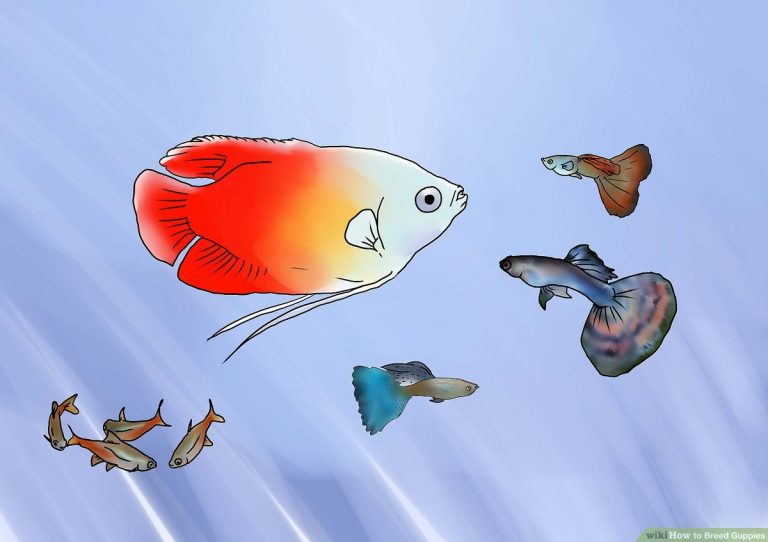Angelfish Popeye
Angelfish Popeye: Causes, Treatment, and Prevention
What is Angelfish Popeye?
Angelfish Popeye is a common condition that affects angelfish, a popular aquarium fish known for its graceful appearance and vibrant colors. The condition, scientifically known as exophthalmia, is characterized by a swelling and protrusion of the affected fish’s eye(s), resembling the condition known as “Popeye” in humans. It can be a distressing sight as the once beautiful fish now presents an alarming and abnormal appearance.
Causes of Angelfish Popeye
There are several factors that can contribute to the development of Angelfish Popeye. Understanding these causes is crucial in effectively treating and preventing the condition.
1. Bacterial Infections: One of the primary causes of Angelfish Popeye is a bacterial infection. Bacteria such as Aeromonas, Pseudomonas, and Flexibacter are commonly associated with this condition. These bacteria can enter the fish’s system through open wounds, poor water quality, or stress, leading to an infection in the eye.
2. Trauma or Injury: Angelfish may sometimes sustain injuries that can damage their eyes, leading to Popeye. Common causes of trauma include territorial disputes, rough handling during transportation, or engaging in aggressive behavior with tank mates.

3. Poor Water Quality: Inadequate water conditions can weaken the fish’s immune system, making them more susceptible to infections. Factors such as high ammonia or nitrate levels, pH imbalances, and low oxygen levels can contribute to the development of Popeye in angelfish.
4. Genetic Predisposition: Some angelfish breeds have a genetic predisposition to developing Popeye. Breeds such as Veiltail and Double Dark Veiltail angelfish are particularly prone to the condition.
Treatment for Angelfish Popeye
Now that we know what causes Angelfish Popeye, let’s explore the various treatment options available to address this condition effectively.
1. Antibiotics: If the cause of the Popeye is determined to be a bacterial infection, the primary course of treatment involves administering appropriate antibiotics. Your veterinarian or local pet store expert can recommend specific antibiotics for your angelfish.
2. Epsom Salt Bath: An Epsom salt bath can help alleviate the swelling and reduce the pressure on the affected eye. Dissolve one teaspoon of Epsom salt per gallon of water and soak the fish for around 15 minutes. Ensure the water temperature matches the fish’s habitat.
3. Clean and Isolate: If the Popeye is a result of trauma or injury, it is crucial to remove the angelfish from the main tank and isolate it in a separate quarantine tank. Keep the water temperature stable and perform regular water changes to maintain optimal conditions for healing.
4. Correct Water Parameters: Improving water quality is essential in preventing and treating Popeye in angelfish. Regularly test and maintain appropriate water parameters such as pH, ammonia, nitrate, and temperature. Ensure the tank is properly cycled to create a healthy environment for your fish.
5. Surgical Intervention: In severe cases where the swelling does not recede with conservative treatment options, surgical intervention may be necessary. Consult a qualified veterinarian experienced in fish surgeries to explore this option.
Preventing Angelfish Popeye
Prevention is always better than cure when it comes to any fish-related diseases or conditions. Here are some measures you can take to minimize the risk of your angelfish developing Popeye:
1. Maintain Optimal Water Quality: Regularly monitor water parameters, perform routine water changes, and ensure the tank is properly cycled. Clean the tank regularly, removing any debris or uneaten food that may cause water pollution.
2. Provide Adequate Space: Overcrowded tanks can lead to stress, aggression, and territorial disputes among angelfish. Provide enough swimming space and ensure appropriate tank mates to reduce the likelihood of injuries or infections.
3. Quarantine New Fish: When introducing new fish to your tank, it is crucial to quarantine them first. This allows you to observe their health and behavior before introducing potential diseases or infections to the main tank.
4. Handle Fish with Care: Always handle angelfish with gentle care, especially during transportation or maintenance activities. Rough handling can lead to stress, injuries, and subsequent Popeye.
5. Balanced Diet: Ensure your angelfish receives a well-balanced diet consisting of high-quality fish flakes, pellets, and occasional live or frozen foods. A nutritious diet boosts the immune system and improves overall health.
Frequently Asked Questions
Q: Is Angelfish Popeye contagious to other fish?
A: Angelfish Popeye is typically not contagious to other fish in the tank. It is usually caused by specific factors such as bacterial infections, trauma, or poor water quality.
Q: Can Angelfish Popeye lead to blindness?
A: If left untreated, severe cases of Angelfish Popeye can lead to permanent vision loss. Prompt and appropriate treatment is essential to prevent long-term complications.
Q: Can I use over-the-counter medication to treat Angelfish Popeye?
A: It is generally recommended to consult with a veterinarian or an expert in fish care before using any medication. They can provide guidance on the specific medication and dosage suitable for your angelfish.
Final Thoughts
Angelfish Popeye can be a cause for concern among aquarium enthusiasts, but with prompt identification and treatment, the condition can be effectively managed. By maintaining optimal water quality, providing a nourishing diet, and taking preventative measures, you can help reduce the risk of your angelfish developing Popeye. Remember, the health and well-being of your fish should always be a top priority, and regular observation and care will go a long way in ensuring happy and thriving aquarium inhabitants.






